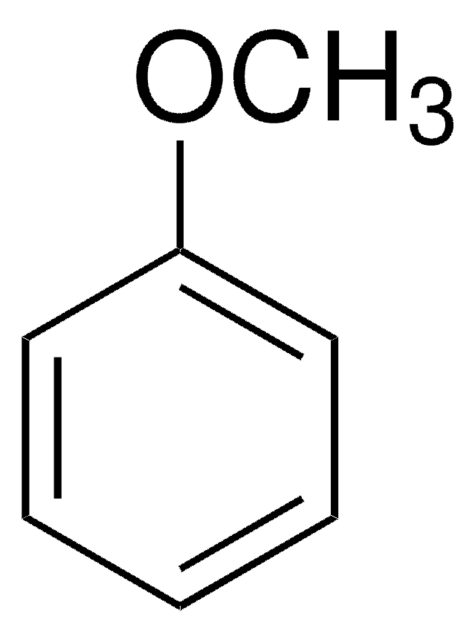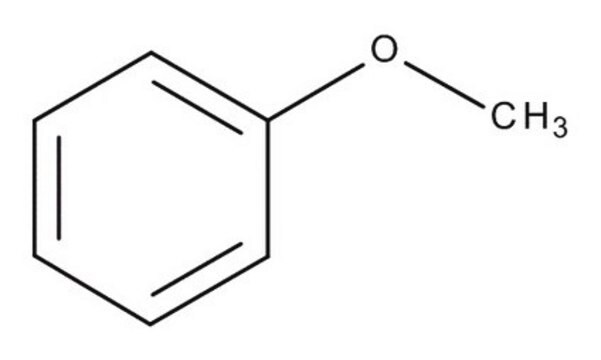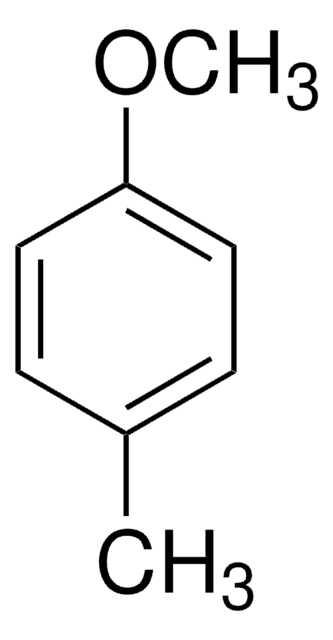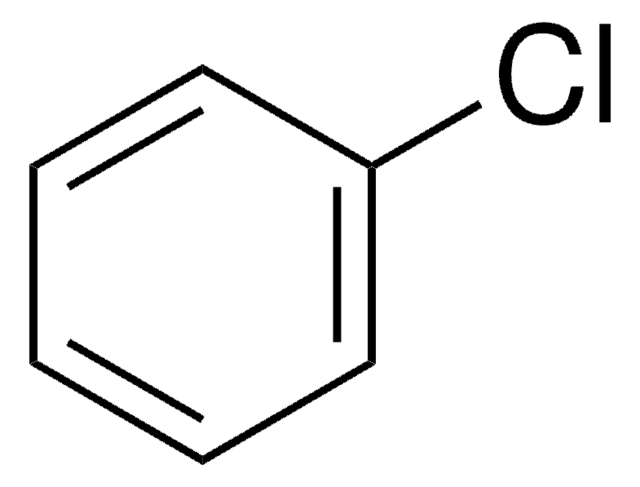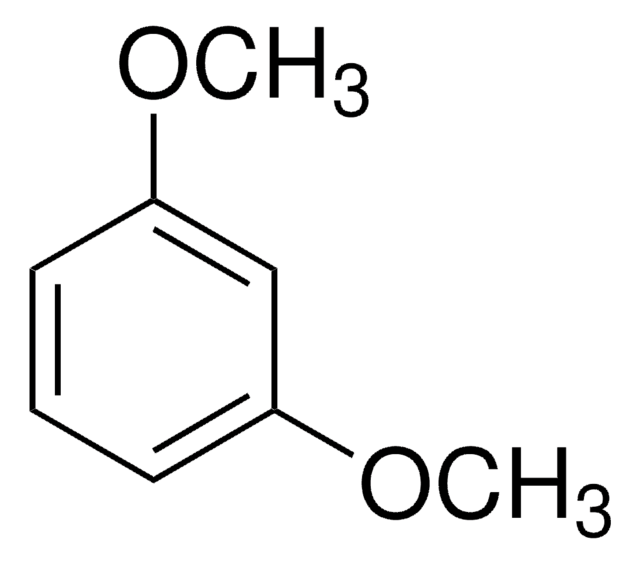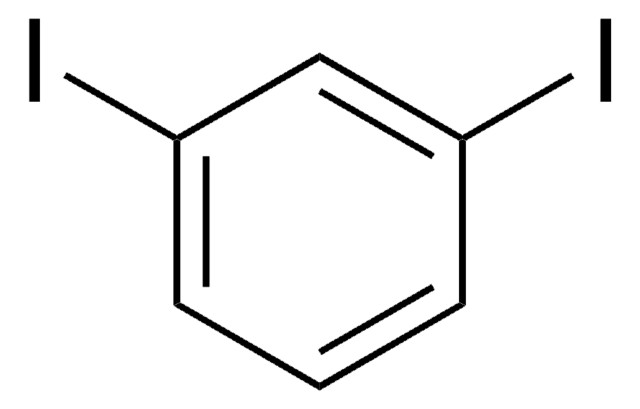241989
Ethoxybenzene
99%
Sinónimos:
Phenetole, Ethoxybenzene, Ethyl phenyl ether
Iniciar sesiónpara Ver la Fijación de precios por contrato y de la organización
About This Item
Fórmula lineal:
C6H5OC2H5
Número de CAS:
Peso molecular:
122.16
Beilstein:
636270
Número CE:
Número MDL:
Código UNSPSC:
12352100
ID de la sustancia en PubChem:
NACRES:
NA.22
Productos recomendados
Nivel de calidad
Ensayo
99%
Formulario
liquid
índice de refracción
n20/D 1.507 (lit.)
bp
169-170 °C (lit.)
mp
−30 °C (lit.)
solubilidad
alcohol: freely soluble(lit.)
diethyl ether: freely soluble(lit.)
water: insoluble(lit.)
densidad
0.966 g/mL at 25 °C (lit.)
grupo funcional
phenoxy
cadena SMILES
CCOc1ccccc1
InChI
1S/C8H10O/c1-2-9-8-6-4-3-5-7-8/h3-7H,2H2,1H3
Clave InChI
DLRJIFUOBPOJNS-UHFFFAOYSA-N
¿Está buscando productos similares? Visita Guía de comparación de productos
Categorías relacionadas
Aplicación
Ethoxybenzene (Phenetole) was used as an analyte in assaying the performance of the porous graphitic carbon (PGC) particles.
Elija entre una de las versiones más recientes:
¿Ya tiene este producto?
Encuentre la documentación para los productos que ha comprado recientemente en la Biblioteca de documentos.
Los clientes también vieron
H Ohi et al.
Xenobiotica; the fate of foreign compounds in biological systems, 22(11), 1329-1337 (1992-11-01)
1. The effects of oxygen concentration were studied on the metabolic pathways of anisole homologues (anisole, phenetole and isopropoxybenzene) catalysed by liver microsomes from phenobarbital-treated rats. 2. With increase of oxygen concentration, the rate of anisole o-hydroxylation reached a plateau
Wojciech Piatkowski et al.
Journal of chromatography. A, 1003(1-2), 73-89 (2003-08-06)
The competitive adsorption behavior of the binary mixture of phenetole (ethoxy-benzene) and propyl benzoate in a reversed-phase system was investigated. The adsorption equilibrium data of the single-component systems were acquired by frontal analysis. The same data for binary mixtures were
Niklas Helle et al.
European journal of mass spectrometry (Chichester, England), 25(1), 142-156 (2019-02-19)
The vibronic structure of the first electronically excited state S1 and ionic ground state D0 of phenetole has been investigated by means of resonance enhanced multi photon ionization (REMPI) and mass analyzed threshold ionization (MATI) spectroscopy. The vibronic levels were
David S Jensen et al.
Journal of chromatography. A, 1218(46), 8362-8369 (2011-10-19)
Porous graphitic carbon (PGC) particles were functionalized/passivated in situ in packed beds at elevated temperature with neat di-tert-amylperoxide (DTAP) in a column oven. The performance of these particles for high performance liquid chromatography (HPLC) was assayed before and after this
Isamu Shiina et al.
Bioorganic & medicinal chemistry, 15(24), 7599-7617 (2007-10-02)
Two new synthetic pathways to the anti-cancer agent tamoxifen and its derivatives were developed. The first route involved the aldol reaction of benzyl phenyl ketone with acetaldehyde followed by Friedel-Crafts substitution with anisole in the presence of Cl(2)Si(OTf)(2) to produce
Nuestro equipo de científicos tiene experiencia en todas las áreas de investigación: Ciencias de la vida, Ciencia de los materiales, Síntesis química, Cromatografía, Analítica y muchas otras.
Póngase en contacto con el Servicio técnico